Last Updated: June 6, 2025
Overwhelmed by your upcoming family trip to Costa Rica? There is so much to think about! As a family living in Costa Rica since 2013 with two kids (now 9 and 6), we are here to put your mind at ease. In this post, we’ll share some local tips about traveling to Costa Rica with kids that you won’t find in typical travel guides.
This post is part of our Costa Rica with Kids hub, which includes detailed activity guides, hotel recommendations, and family itineraries.
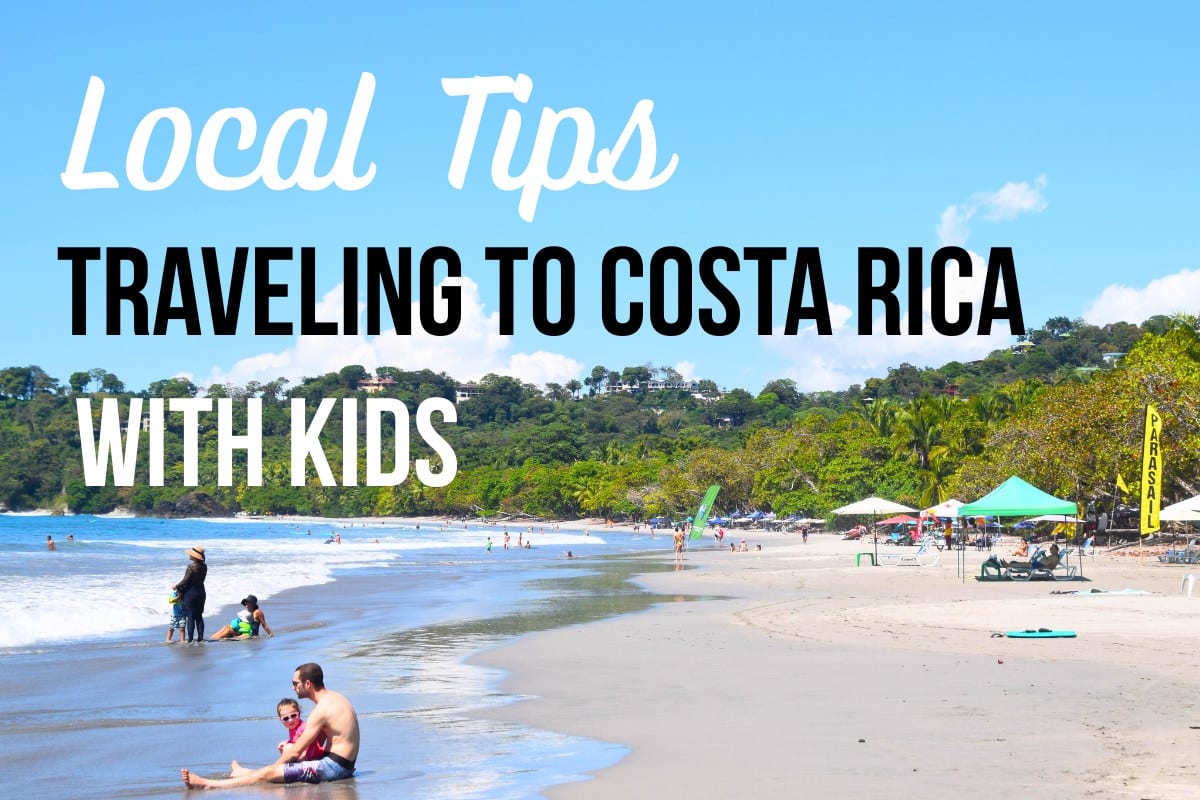
Top Local Tips for Costa Rica Family Vacations
1. Restaurants & Food
A big relief for most parents is that restaurants in tourist areas usually have kid-friendly menu options.
Standard kids’ offerings include chicken or fish fingers with fries, plain pasta, a burger, rice and beans, and quesadillas.
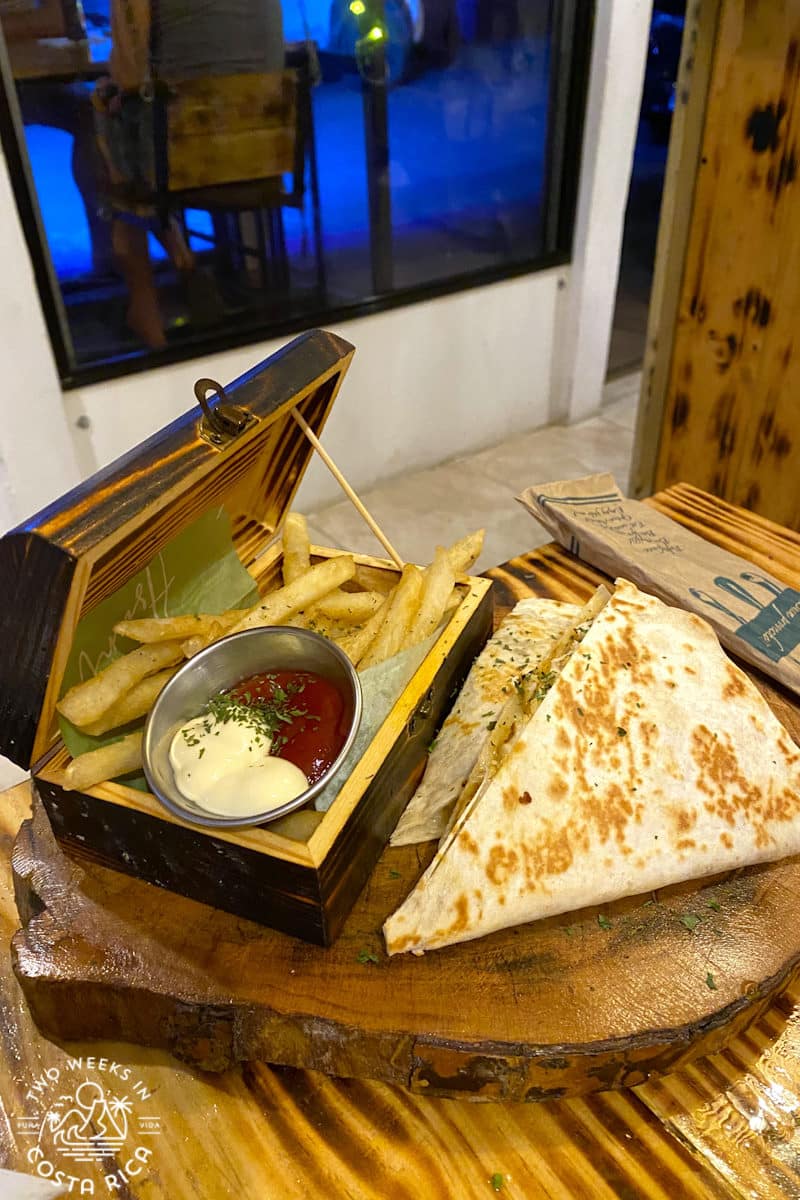
Some restaurants won’t have a separate menu so it’s good to have backup options.
Traditional Costa Rican dishes like casados work well for many kids. Casados are usually served at lunchtime. They have a variety of different foods, but typically include rice, beans, fried plantains, side salads, and a protein like chicken, fish, or beef.
Rice dishes like arroz con pollo (rice with chicken) or arroz con camarones (rice with shrimp) are also a hit with some kids. These staple dishes are always served with French fries and a side salad.
For breakfast, eggs are a good option. Many kids also enjoy fresh local cheeses like Turrialba. This is a soft, bland cheese that both our kids love.
If you’re traveling with a baby or toddler, you could just get them a side of rice and beans or platanos (sweet fried plantains). This is what we did when our kids were young.
Restaurants usually have highchairs. They’re often cute wooden chairs that are handcrafted in Costa Rica.
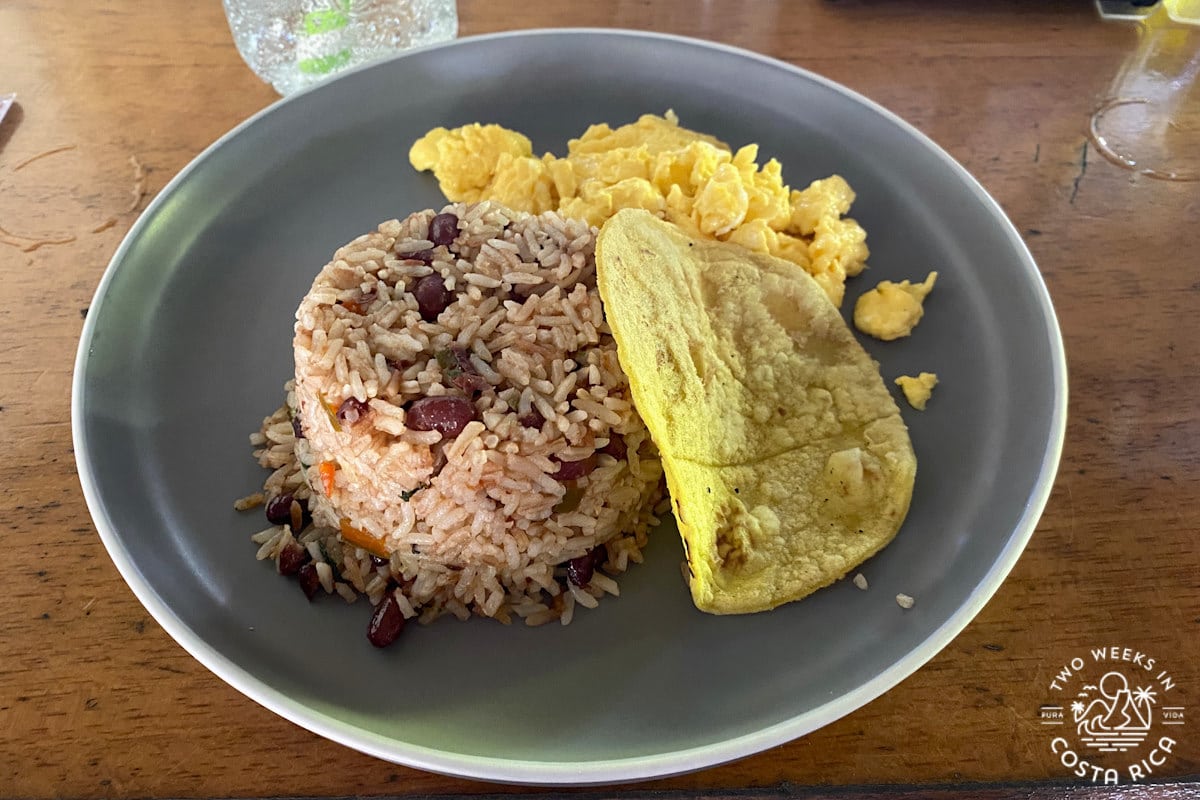
2. Speaking Spanish
While most people working in tourism speak at least some English, a few basic phrases go a long way if you don’t speak Spanish.
Locals absolutely light up when kids try to speak Spanish, even just “hola” and “gracias.” Kids often pick up words faster than parents too! Don’t worry about perfect pronunciation. Costa Ricans are patient and appreciate any effort.
One phrase that’s helpful: “¿Habla inglés?” (Do you speak English?). This saves awkward moments when you’re not sure.
If you get stuck, most Costa Ricans are incredibly helpful and will find someone who speaks English or use gestures to communicate. We’ve seen this countless times—it’s part of that friendly culture we love here.
For more helpful phrases, see our Simple Spanish for Costa Rica post.
3. Drinking Water
You can drink tap water and ice in most parts of Costa Rica without a worry. There are, however, some exceptions. We have lived in towns where you want to avoid tap water.
Places where bottled or filtered water is recommended include Esterillos, Bejuco, Puerto Viejo de Talamanca, Cahuita, and parts of northern Guanacaste (Tamarindo, Playa Grande, Flamingo, etc.).
Our drinking water safety post has more information.
4. Smoothies
Make sure your kids try a fresh fruit smoothie (batido)! Costa Rica has so many amazing tropical fruits like pineapple, papaya, mango, and even soursop (guanabana). Our kids love these while waiting for food.
Tip: You can have smoothies made with just ice or ask for them with milk (con leche) to thicken it up like a milkshake.
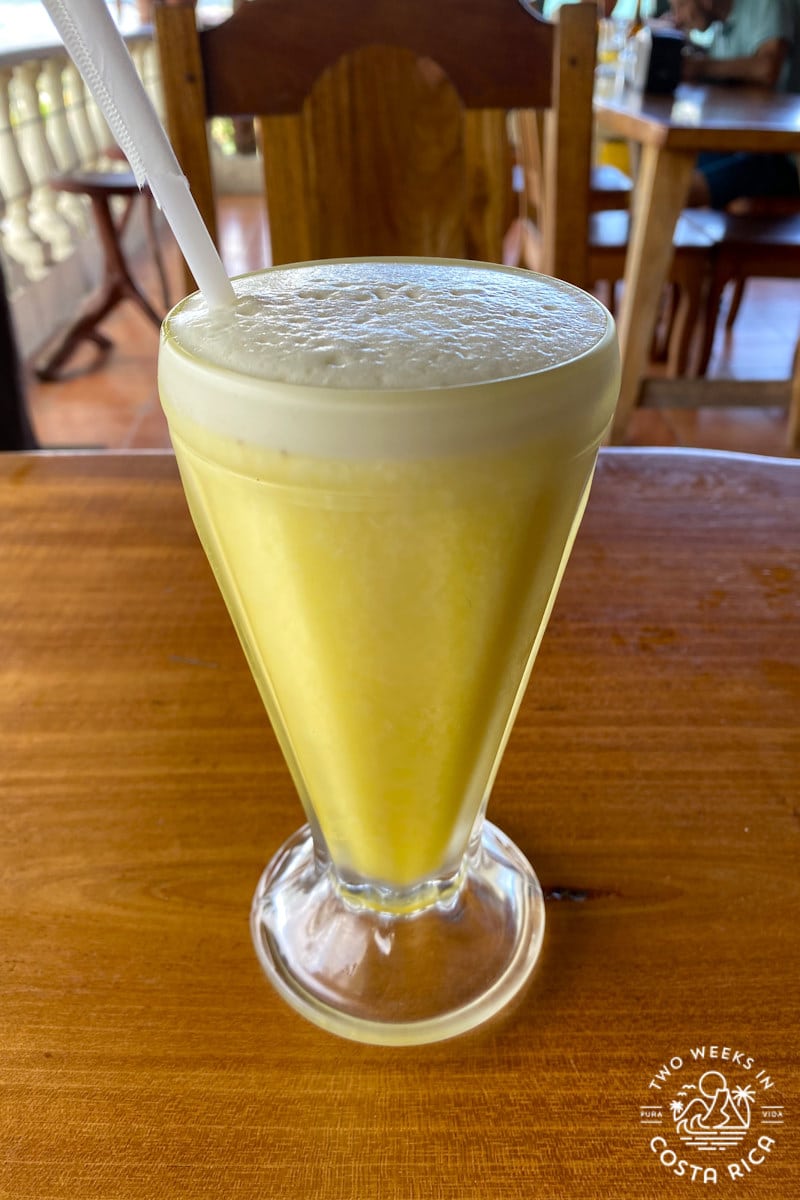
5. Healthy Snacks
While you may be able to grab an organic oat and fruit granola bar at any checkout where you live, in Costa Rica that is not the case.
Most snacks are unhealthy chips, cookies, and crackers. If you look a little harder, you can find some better options, though.
Nuts, fresh fruits, and specialty foods without all the additives are often hiding in the larger grocery stores somewhere. A couple of good brands to look for are Seed or Nutrisnacks. These are Costa Rican companies that make healthier snack options.
Still, you might want to pack some of your own snacks for the trip. Here’s a link to our post on what kinds of foods you can bring into Costa Rica.
6. Ice Cream, Granizados, and Churchills
On the opposite end of the spectrum are these sweet treats.
Ice cream shops are popular all around the country because the locals love it. The biggest and most commercial is the chain, Pops. But there are smaller ones in most towns too.
For something unique, beach vendors often sell granizados (pronounced Gran-E-Saados) or Churchills. These are shaved ice treats with sweet syrup, condensed and powdered milk, and sometimes extra toppings. The Churchill is basically a granizado with a scoop of ice cream on top plus some other embellishments.
Tip: The most common flavor of syrup for the shaved ice is called cola. It tastes nothing like Coca-Cola and is sweet and red.
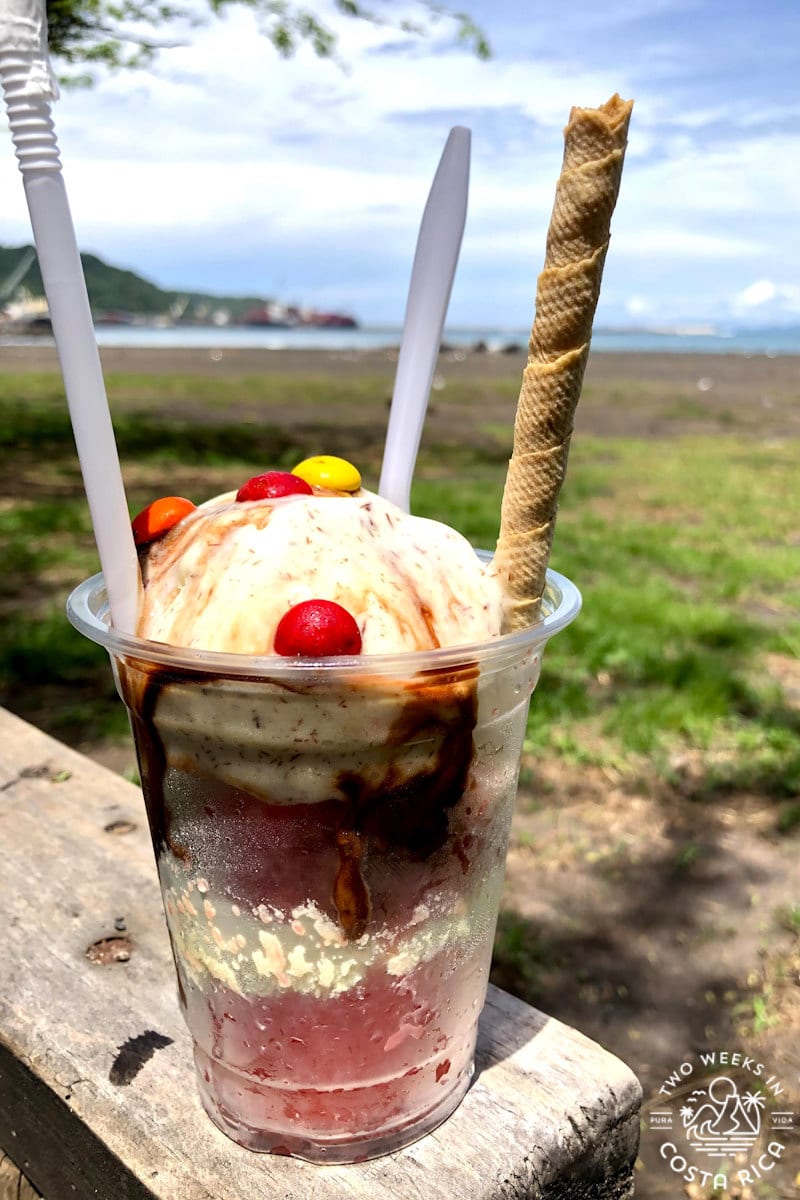
7. Wildlife Viewing & Keeping Kids Engaged
Spotting Wildlife
Here’s a good tip for spotting wildlife: If you are on a trail without a lot of other people around, walk slowly and quietly. Often wildlife like monkeys or birds will freeze up when they hear a noisy group coming and you’ll miss them.
We’ve watched people walk briskly past us and go right under a family of howler monkeys in the trees, without even noticing them.
If you are walking quietly down the trail, you may hear the monkeys before they hear you. That will make them easy to spot!
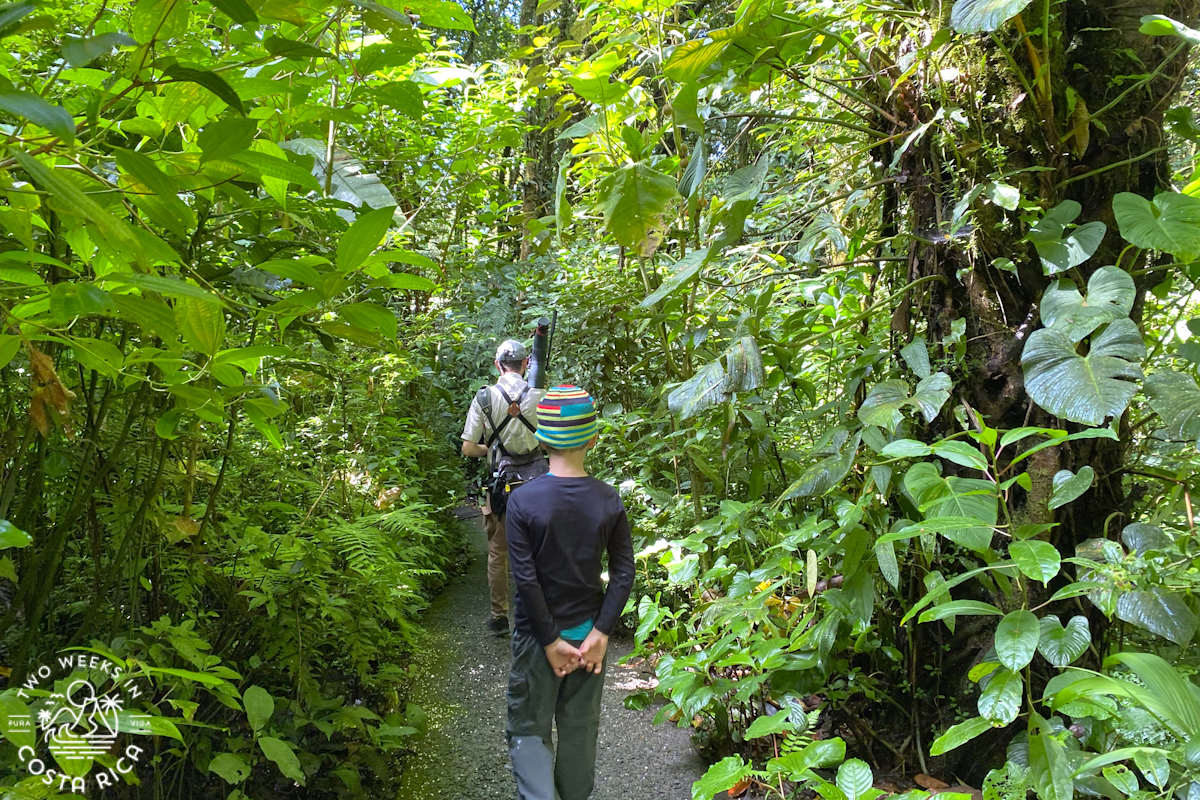
Kid Gear for the Trail
We do a lot of hiking and nature tours with our kids and have learned to bring some fun things to help keep them engaged.
A kid-friendly camera and wildlife identification guides are two essentials we always have. Our youngest loves taking pictures of everything he sees. The fold-out wildlife guides help both kids spot and identify animals. They’re laminated too so are pretty indestructible.
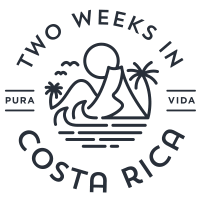
Free Tour Booking Service!
Need help booking tours for your family’s trip? We book tours all around Costa Rica. Booking through us doesn’t cost extra and helps support our website.
View tours in major destinations
Learn more about our travel agency
8. Tour Discounts
This is a great money-saving tip for families: most tour companies offer decent discounts for kids.
Children ages 5-11 usually get around 30-50% off the adult rate (it varies by tour company). Kids under 5 are typically free. A few tours offer special student rates for teenagers as well. These discounts can add up when you’re doing multiple activities during your trip.
9. Interacting with Animals
A lot of people ask us, “Where can I hold a sloth in Costa Rica?”
The truth is that holding a sloth or any other animal is really bad for them. Feeding them is bad too. It gets them used to humans and changes their behavior in the wild.
Unfortunately, other countries allow this, but in Costa Rica, it is strictly prohibited. Costa Rica even has a campaign against animal selfies (you with an animal close in the background). It’s for the benefit of the animals, which we can all appreciate.
Read our post, Sloth Tours in Costa Rica: What’s Ethical?, for some recommendations on how to see these cool creatures up close with minimal impact.
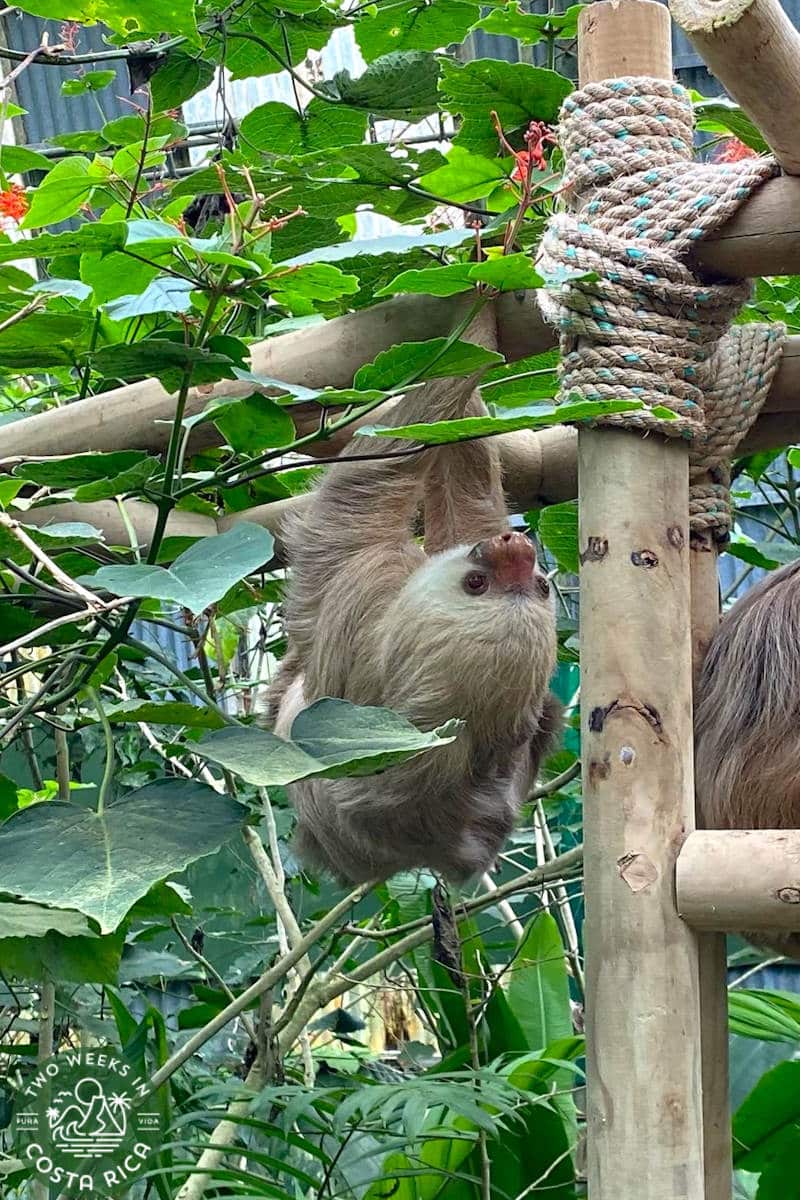
10. Mosquitoes and Other Bugs
Insects are part of life in the tropics. Mosquitoes can be found year-round, but especially during the rainy season (May through November). Usually they aren’t too bad, but it depends on when and where you’re visiting. We find them to be the worst at dawn and dusk.
While mosquito-borne diseases like dengue do exist in Costa Rica, it’s not likely that you’ll contract anything during your short visit. Thankfully, no one in our family has gotten dengue or any other mosquito-borne disease in our 10+ years in Costa Rica.
What we do to avoid bites is wear lightweight long pants for jungle hikes whenever possible and insect repellent if we wear shorts. The repellents we use the most are Picaridin and family DEET.
Here are some links to a few of our articles with more info:
Costa Rica and Mosquitoes: Tips to Prevent Zika, Dengue, and More
Bugs, Spiders, and Snakes in Costa Rica: What to Expect
11. Sun Protection
Sun protection is one of the most important things to keep in mind when visiting Costa Rica with kids. Costa Rica is very close to the equator so the sun is intense year-round, even on cloudy days.
Pack rash guards (long-sleeved not short sleeved) for the ocean and pool, hats, and plenty of reef-safe sunscreen. These Coolibar hats are what we have been using for our kids for years. We use these wide-brim hats for hiking.
Although you can buy sunscreen in Costa Rica, the options are more limited (especially for natural). It’s also more expensive.
See our Packing List for more tips.
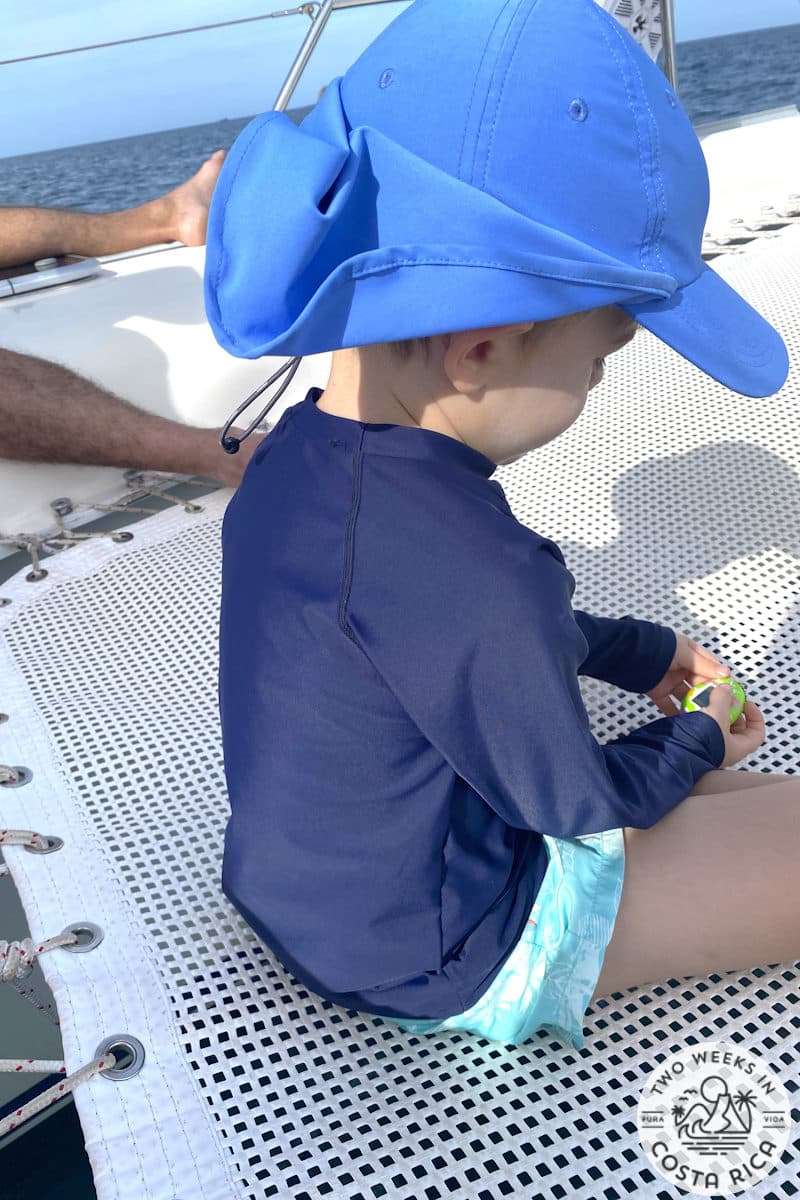
12. Beaches
Costa Rica’s beaches vary a lot as far as safety and swimming conditions so choosing the right ones is essential. While some are coves with gentle water, perfect for young swimmers, others are long stretches of sand with powerful breaks.
On most surfing beaches, rip tides are a concern. Splashing and swimming in the shallow water can be fine but be sure to teach your kids about the dangers of rip currents so they don’t go out too far. You will see lifeguards at some beaches in Costa Rica, but because they are usually not government-funded, they’re not everywhere.
Guanacaste Province on the northern Pacific coast offers some of the most family-friendly swimming beaches, but there are good spots in other regions too.
Before planning your beach days, be sure to check our detailed guide to the Best Beaches for Families in Costa Rica.
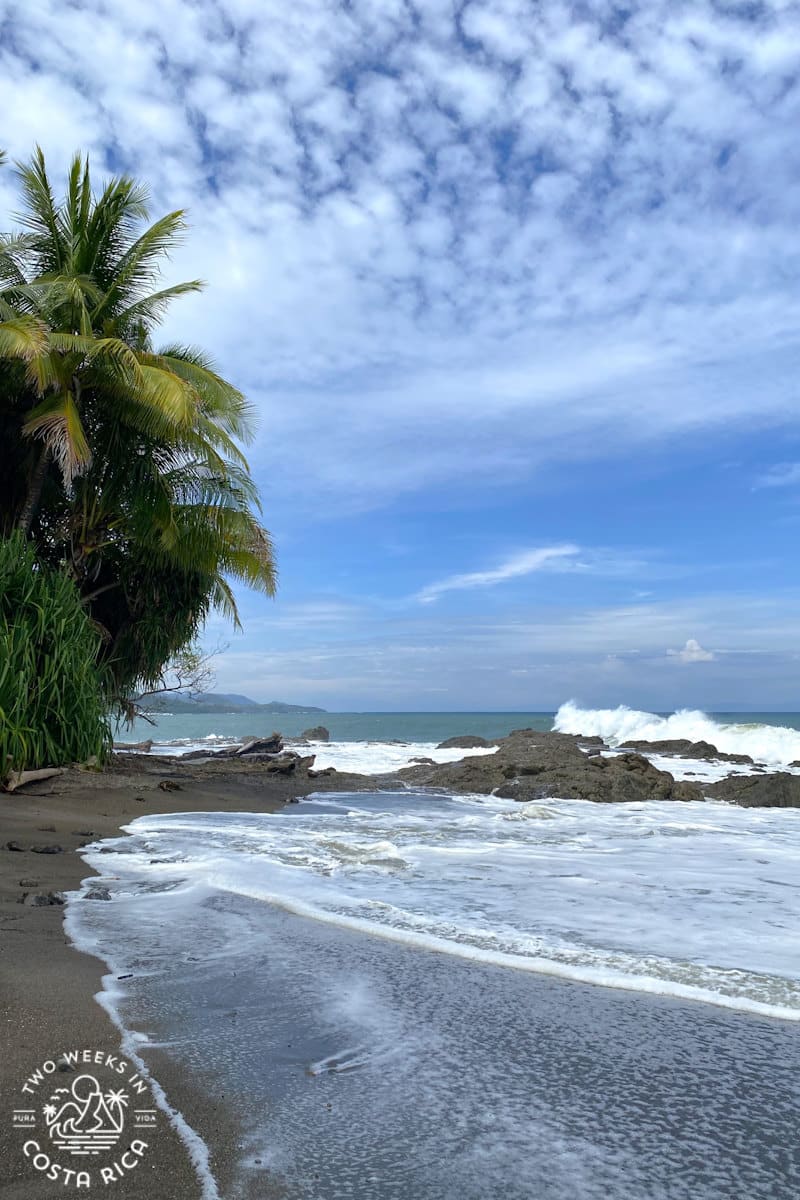
13. Costa Rica’s Sand
Something most people don’t talk about is how fine Costa Rica’s sand is.
The sand grains on most beaches are very tiny and get stuck in swimwear easily. This can be a pain to wash out.
We find agitating swimsuits in a bucket of water or the sink is the best way to get the sand out. If that’s not possible, try letting them dry completely and then shaking vigorously outside!
14. The Stingray Shuffle
No one in our family has been stung by a stingray in Costa Rica but you should know that they are around.
One thing the local surfers have taught us is the “stingray shuffle.”
Basically, as you are walking through the water, shuffle your feet in the sand as you go. This scares the stingrays away. If a sting does happen, don’t worry, these are painful but not poisonous.
Our Jellyfish and Stingrays in Costa Rica post has more info.
15. Souvenirs
If your kids are like ours, we can’t step foot in a gift shop without breaking out the wallet for trinkets, new apparel, or the “softest teddy” they’ve ever felt.
Souvenir shops in Costa Rica are usually good about having locally handcrafted jewelry, wood carvings, and artwork mixed in with the more commercial hats and T-shirts.
Definitely shop around if you aren’t in a hurry. We’ve found prices are all over the place with souvenir shops, even for the exact same items.
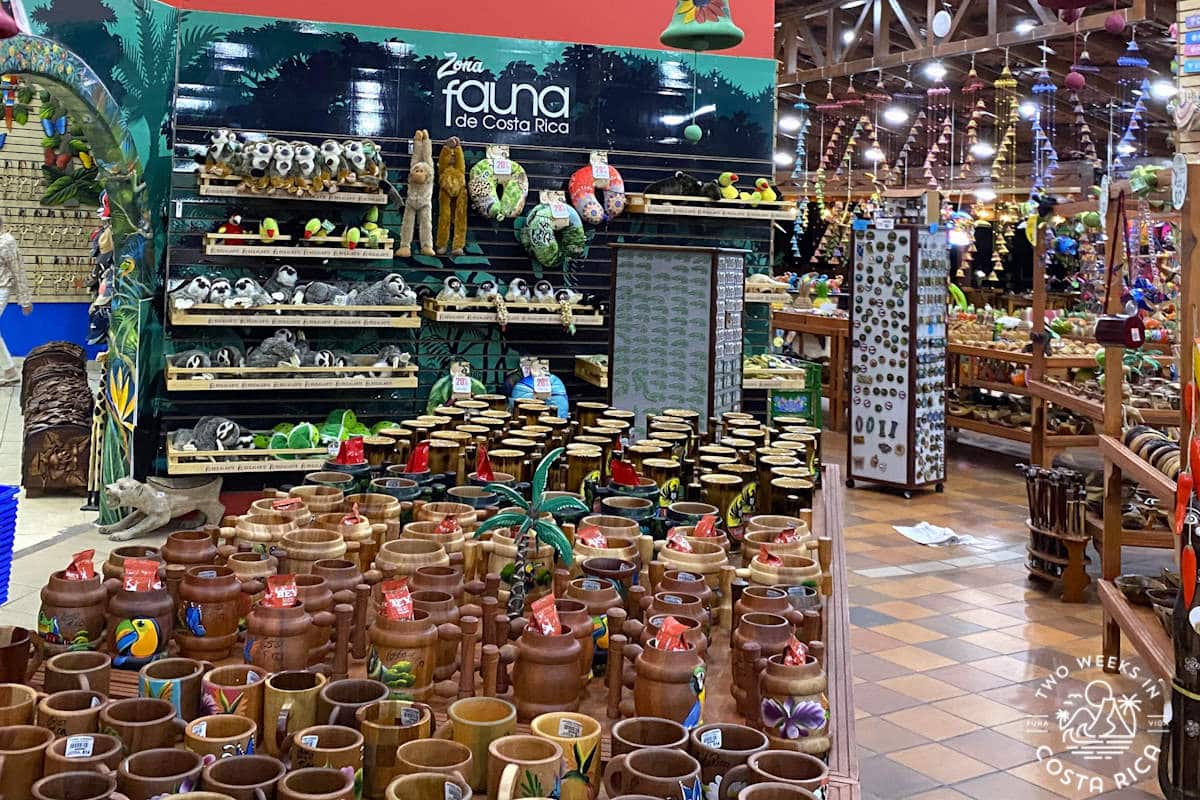
Note: An important thing to know for kids who love collecting is that you can’t keep shells, seeds, or volcanic rocks. Every year, thousands of these treasures are confiscated at Costa Rica’s airports. There are even some beaches where, sadly, you can barely find seashells anymore.
16. Money
The easiest way to pay for things in Costa Rica is with a credit card. They’re accepted almost everywhere now. Hotels, restaurants, tour companies, and most small businesses take them.
That said, you’ll still want to keep some cash on hand. Sometimes you’ll need it for tips, street vendors, farmers markets, and the occasional small soda (local restaurant) that’s cash-only.
ATMs are everywhere in tourist destinations but can be harder to find in certain towns (e.g., Drake Bay and Tortuguero). Be sure to get cash in advance if you’re visiting these remote destinations.
If you do use cash, paying in colones (the local currency) usually gets you a better exchange rate than US dollars, especially with small vendors. Keep small bills (1,000 and 2,000 colon bills) handy for tips and small purchases.
For lots more information, read our post, Money Matters: Currency, Exchanging Money, and Tipping in Costa Rica.
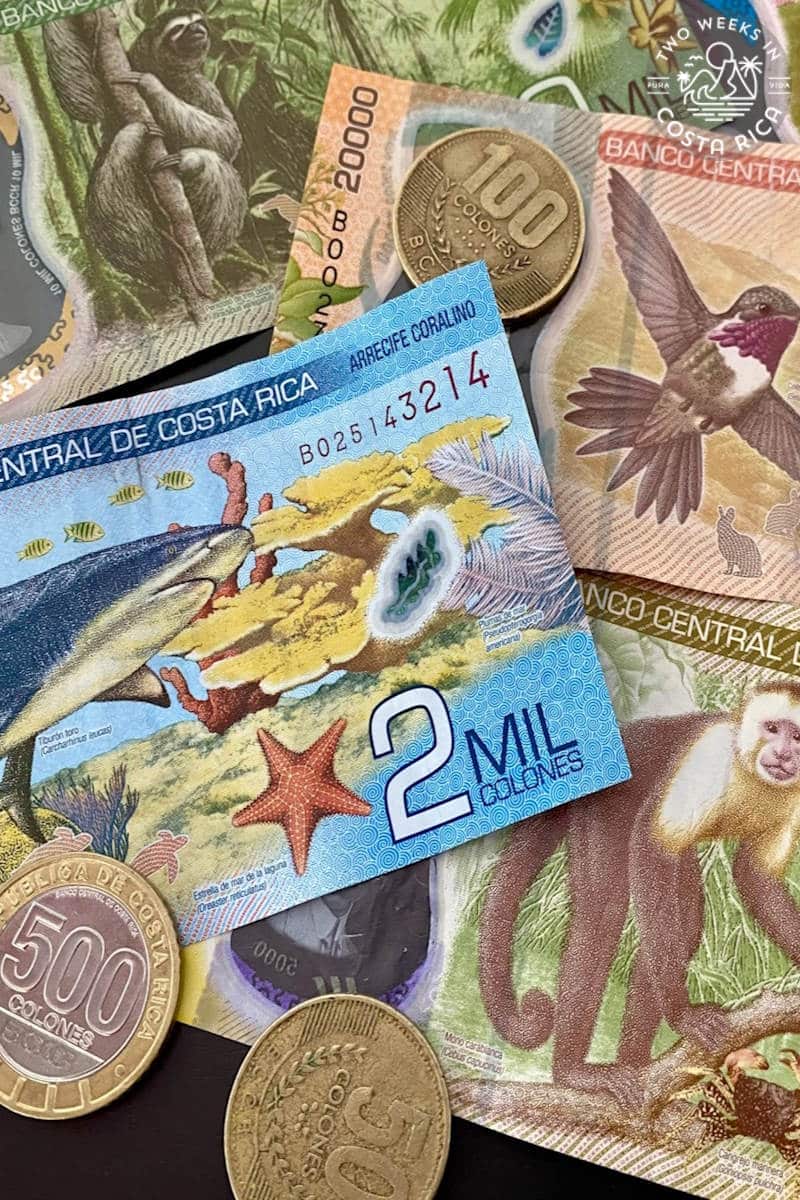
17. Wi-Fi
Internet and Wi-Fi coverage in Costa Rica is fairly good, so if you have kids or teens with devices, you should be all set.
High-speed fiber optic or cable internet is available in all but the most remote areas. Most hotels and vacation rentals offer free Wi-Fi too. The speeds are generally fast enough for streaming videos, video calls, and uploading photos.
Restaurants and cafes usually have Wi-Fi, but not always. Sometimes you have to ask for the password (clave). Don’t be surprised if smaller, local sodas (restaurants) don’t have Internet.
One thing we’ve learned: if you’re heading to very remote eco-lodges or staying in places like Drake Bay or deep in the rainforest, Wi-Fi can be spotty or nonexistent. That’s actually part of the charm for some families who want to truly disconnect!
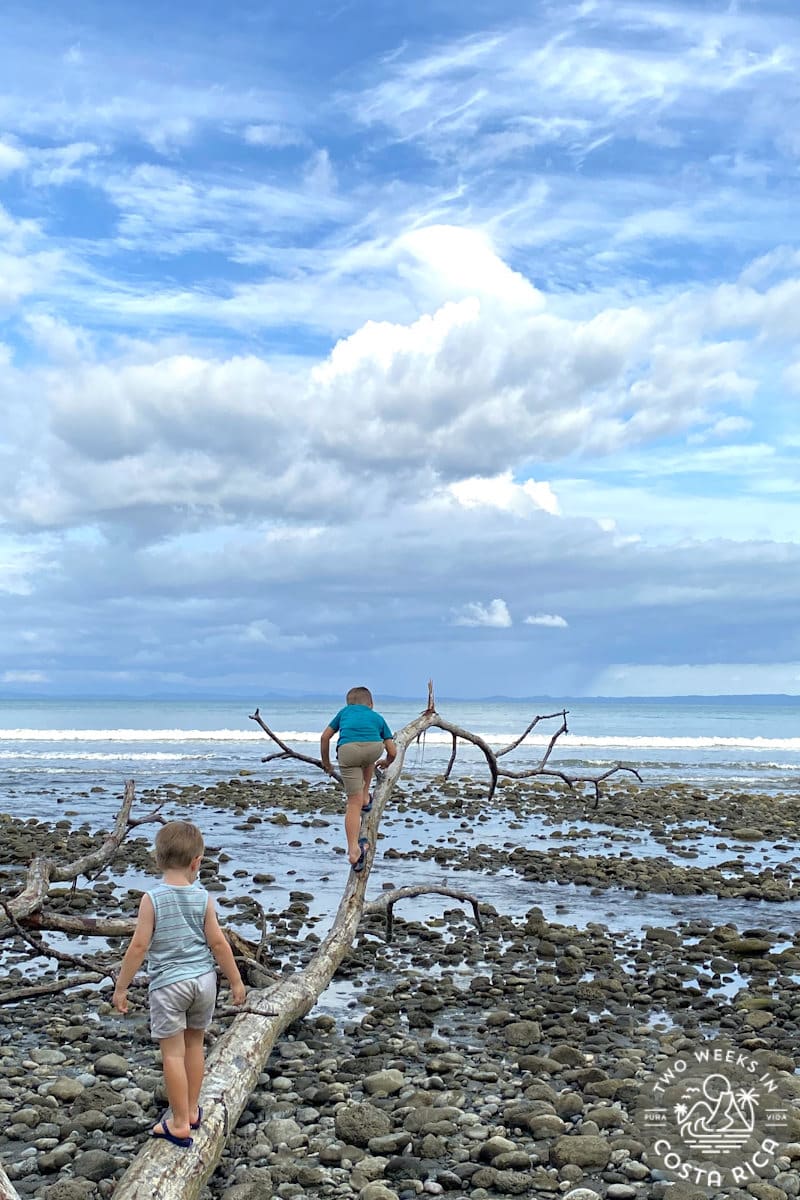
18. Long Car Rides & Staying Connected
For travel between destinations, we recommend having some downloaded movies or offline games available on your kids’ devices. Although the scenery outside will be completely new and different, they may still get bored on a long drive.
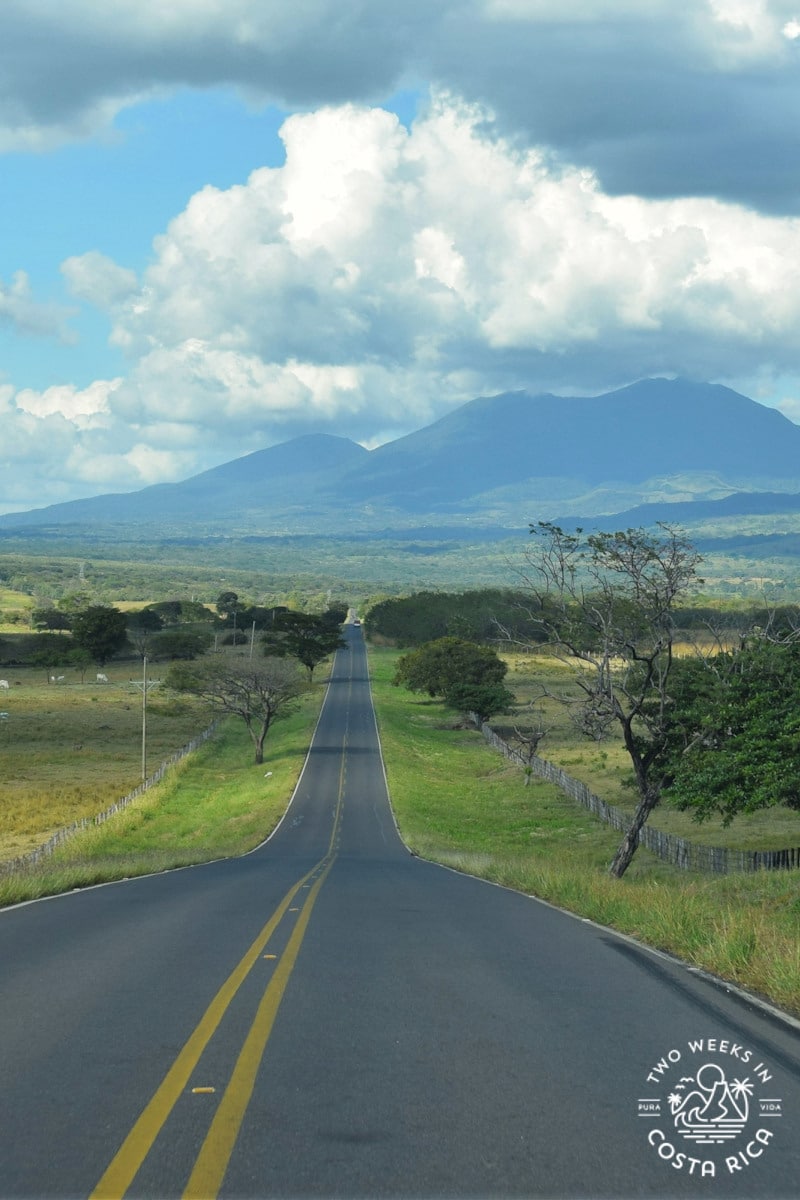
To get connected on the road, you can use your existing phone plan from your home country. Often you just need to pay an additional daily fee for travel abroad. Or, if you have an unlocked phone, you could get a local SIM card. Here’s a link to our post on Getting a SIM Card for Costa Rica.
Costa Rica does have dead zones due to its mountainous terrain, but you should have a good signal most of the time.
Something else worth mentioning is that basically all the locals use WhatsApp. It’s one of the best ways to communicate here.
19. Chargers
Costa Rica uses the same style electrical outlet as the US and Canada (Type A and B plugs; 120 V).
Even so, sometimes hotel rooms or vacation rental houses don’t have many places to plug in and recharge. Our family is always fighting for charging cords at the end of a long, battery-draining day.
Be sure to bring plenty of phone and tablet charging cords with you. Sometimes extra-long ones are helpful too, especially if your kids need to recharge while they are still using their device.
20. Car Seats
Car seats are required by law in Costa Rica for kids ages 12 and under up to a certain size. Our Car Seats in Costa Rica post has the specific requirements.
Rental car and shuttle transportation companies can both provide them. We have a special rental car discount and car seats are free for our readers.
It’s important to note that they are not necessary for tour transfers. So tour companies usually don’t offer them.
If you’d like to use a car seat, you can bring your own and install it in the van (this is what we do). Sometimes it’s easier to just meet the tour guide at the starting location if you are renting a car to avoid the issue altogether.
21. Early Nights and Early Mornings
Our last tip is to be ready for early nights and early mornings.
In Costa Rica, the sun sets around 6:00 p.m. year-round. While some busier beach towns have nightlife, ecotourism towns and more remote spots get quiet by around 9:00 p.m.
A lot of families get in a rhythm of going to bed early after a busy day and waking up early for the next adventure.
If you have light sleepers in your family, also know that the sun rises by 5:30 a.m. All the noisy tropical birds, monkeys, and occasional motorcycle or big truck start their day at that time too. A sound machine can help with this (our family uses the Dreamegg).
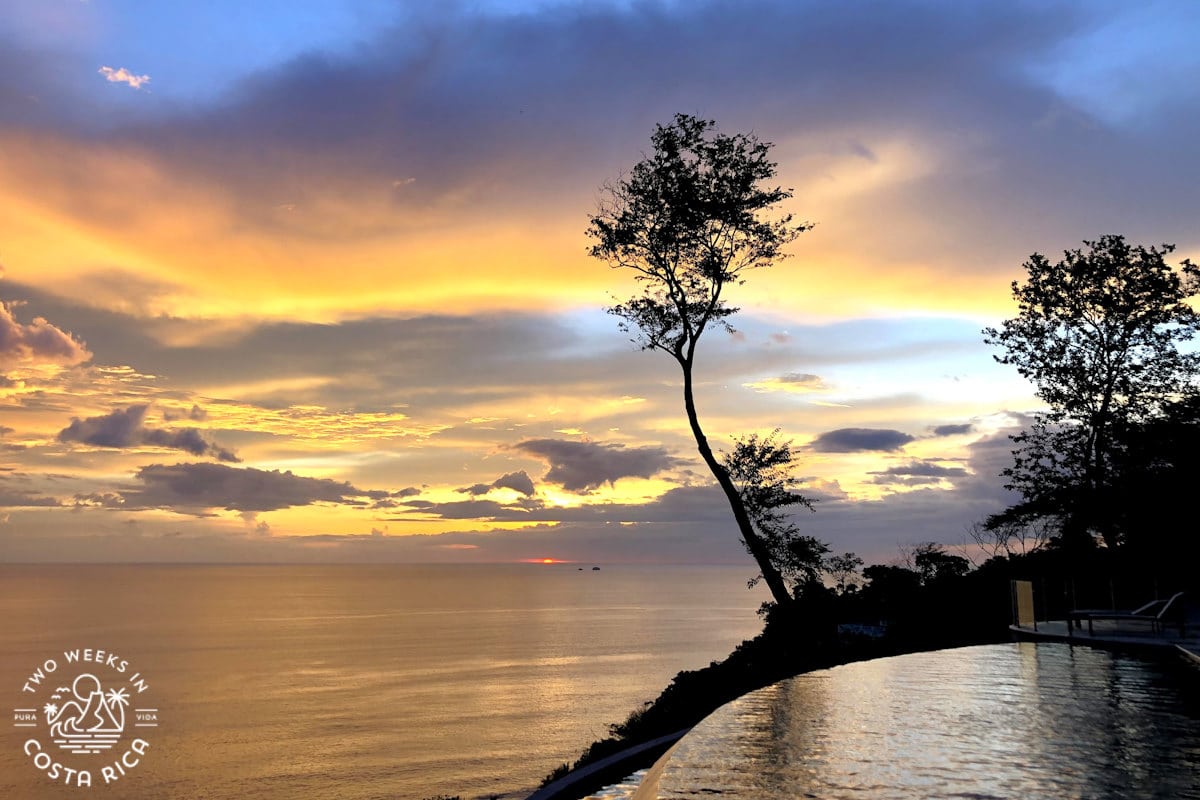
Conclusion
We hope that these local insights help make your Costa Rica family adventure a lot smoother and more enjoyable.
For comprehensive trip planning guidance, destinations, and itineraries for your family’s vacation, don’t forget to check out our Costa Rica with Kids hub.
Some of the links in this post are connected to affiliate programs we have joined. As an Amazon Associate we earn from qualifying purchases.
FAQs About Traveling to Costa Rica with Kids
Is the Caribbean or Pacific coast better for families?
Both coasts have gorgeous beaches and abundant wildlife, but the Pacific coast is generally our recommendation for families, especially for a first-time visit. The Pacific side has more developed tourism infrastructure, a wider range of family-friendly accommodations, and overall lower crime rates.
The Caribbean has its own unique charm and cultural vibe, but the Pacific offers more reliable weather patterns and easier access to other popular destinations.
Are there itinerary options that don’t require a lot of driving?
Yes! Costa Rica’s mountainous terrain can make for some longer drives between destinations, which isn’t always ideal with kids. We recommend focusing on just two destinations for a seven-day trip and choosing locations that are closer together.
Our post on 2 Itineraries that Limit Drive Time gives you options that minimize time in the car while still allowing you to experience the best of Costa Rica.
What is the best Costa Rica itinerary with kids?
There are so many good options!
For a sample family itinerary, read our post, Costa Rica with Kids: A 10-Day Itinerary.
If you’d like personalized help with your family’s planning, feel free to reach out through our Video Chat Service to schedule a call. We can help you with an itinerary and recommend specific hotels and activities.
What is the best time of year to visit Costa Rica?
For families, the dry season (December through April) offers the most reliable weather, though it’s also the busiest and most expensive time.
Early rainy season (May through end of July) is a great time to visit, with lower prices, fewer crowds, and typically just afternoon/evening showers that won’t disrupt most of your activities.
Do I need a notarized letter to travel with a child to Costa Rica?
There are no specific requirements on this, but if only one parent is traveling with a child, it’s a good idea to get a notarized letter of consent from the other parent. This can help avoid potential questions or delays at immigration. While many families travel without issues, having this documentation provides peace of mind.
Have a question about traveling to Costa Rica with kids? Ask us below!
Looking for more information to plan your trip? Check out these posts:
Transportation Options in Costa Rica: Car, Shuttle, Uber & More – Learn about all the options for getting around.
Naturalist Guides in Costa Rica: When You Need Them and How to Find One – This will help you decide when it’s worth getting a guide.
Costa Rica Hotel Guides: Get reviews of hotels in popular destinations.


